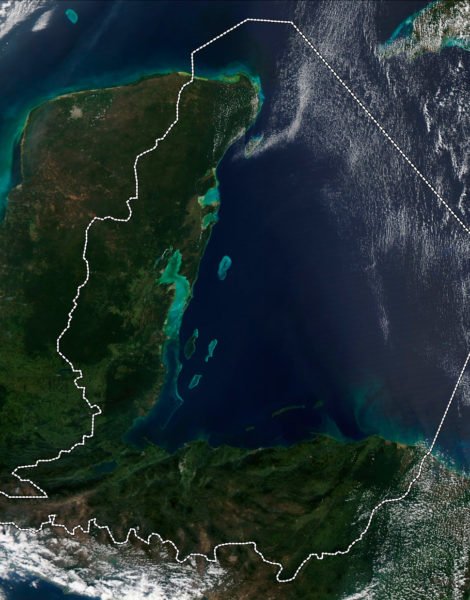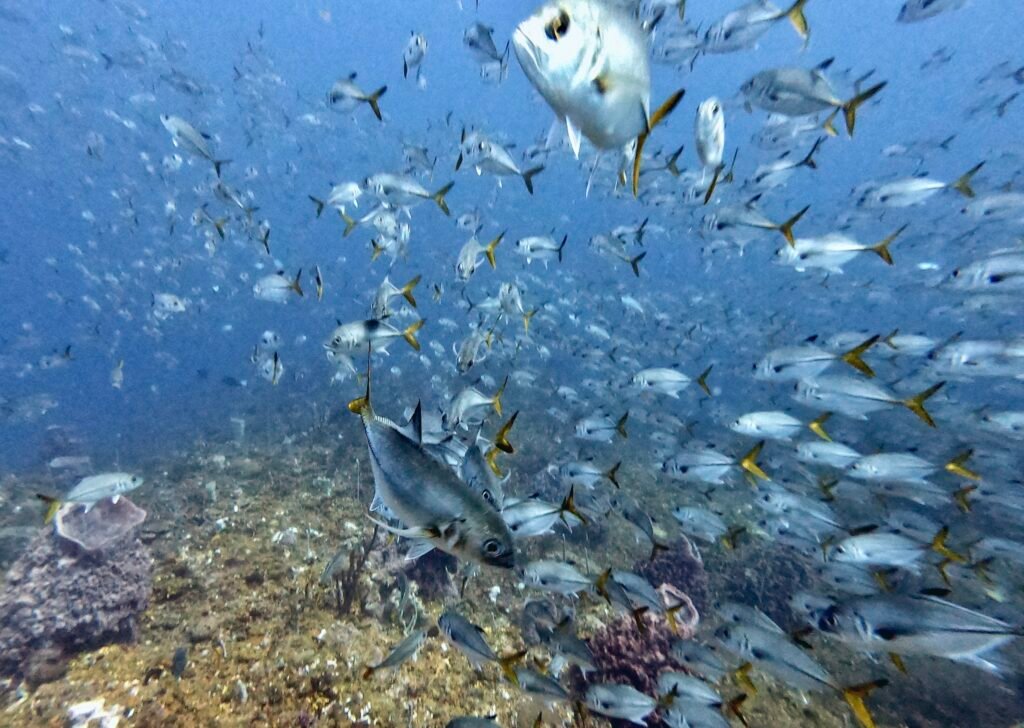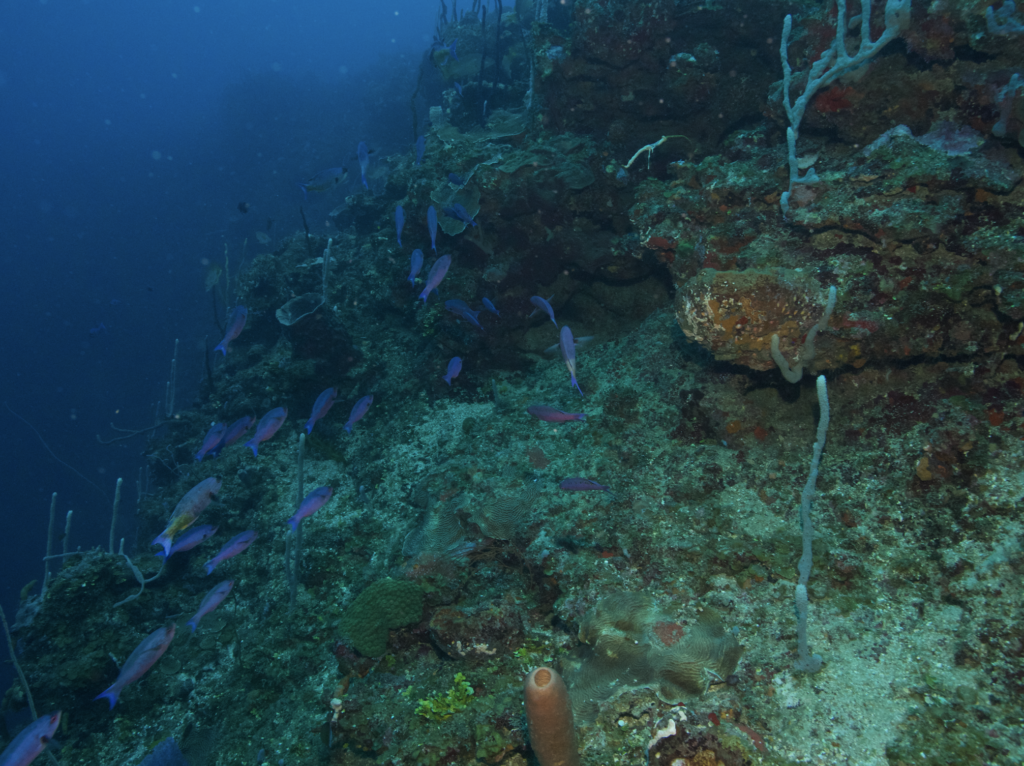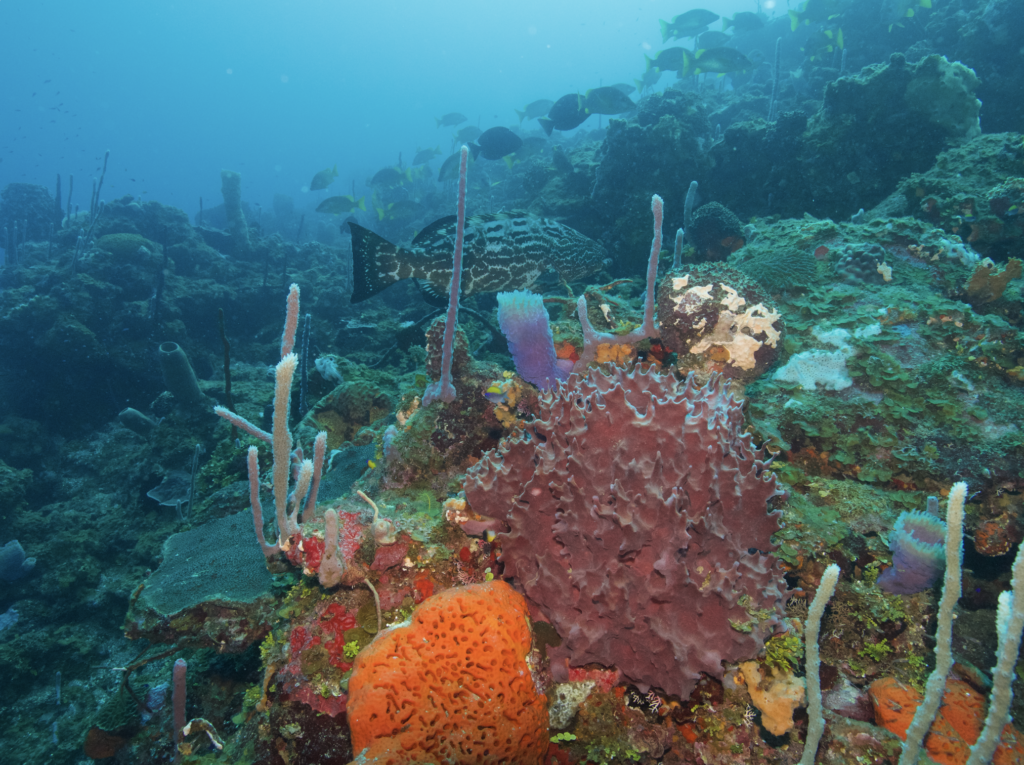The Mesoamerican Reef (MAR) is the largest coral reef in the western Atlantic and is part of a larger interconnected system of coastal habitats and currents that extends throughout the wider Caribbean. It spans over 1000 km along the Caribbean coast from the tip of the Yucatan Peninsula in Mexico, through the coasts of Belize and Guatemala, to the Bay Islands of Honduras. The MAR encompasses diverse coastal and marine resources, including mangrove forests, seagrass beds, and extensive reef systems critical in supporting fisheries, ensuring food security, providing livelihoods, and supporting the tourism and fishing industries.
Despite these vital contributions, the MAR faces significant challenges, primarily attributed to relentless fishing pressure, habitat loss, and climate change, which continue to impact these populations. However, due to improved enforcement efforts, commercial fish biomass has increased by 40% for the first time in 5 years, although the population of bigger fish species of snapper and groupers remains “poor” on average (696g/100m²), being 67% and 78% immature respectively at sites surveyed in the MAR by the Healthy Reef Healthy People (HRHP), as documented in the 2024 Mesoamerican Reef Report Card.
Photography by: HRHP


Photography by: HRHP
Fish spawning aggregations (FSAs) are temporary gatherings of fish that come together at specific times and locations to reproduce. These aggregations include individuals of the same species that gather annually or periodically in response to environmental cues such as lunar phases, water temperature, and tidal currents. Densities of FSAs are up to three times higher than during non-reproductive periods, making them extremely vulnerable to fishing. They occur in a variety of marine environments, including coral reefs, coastal areas, and open ocean habitats where some fish species migrate, even from long distances to reach their spawning grounds, while others remain close to their territorial range. They represent almost the entire annual reproductive output of the species spawning at each site and are critical to the reproductive success of many species.
FSAs are critical components of the Mesoamerican Reef (MAR) system, playing an important role in the life cycle of several fish species that contribute to the region’s biodiversity. They depend on the diverse and unique habitats in the MAR, such as coral reefs and mangroves that provide suitable habitat conditions that attract thousands of individuals at specific locations and times of year to reproduce and maintain healthy fish populations in the region.
Photography by: CORAL
The Cayman Crown Reef stands as one of the most developed and healthy reefs within the Mesoamerican Reef region. It has abundant live coral cover, thriving marine megafauna, and important multi-species fish aggregation sites. It is situated along the maritime boundaries of Belize and Guatemala and in 2020, it was declared a 10-year no-take zone in Guatemala and a replenishment zone as an expansion of the Sapodilla Cayes Marine Reserve in Belize.
Discovered in 2013 by Ana Giró, the Healthy Reefs for Healthy People (HRHP) coordinator for Guatemala, the Cayman Crown reef came to light during collaborative efforts with local fishermen from the Quetzalito community. These fishermen, who primarily fish in deep waters, mentioned the presence of “rocks” (local slang for coral reefs) in the area.
Initial exploratory dives, continued monitoring, and bathymetric analyses conducted by HRHP revealed that the Cayman Crown reef contains a diverse variety of habitats and marine life. This reef system is of significant and unique ecological importance, with valuable connectivity within the Mesoamerican Reef. The reef was found to have over 50.3% live coral as of 2023, far surpassing the MAR regional average of 17%.

Photography by: TIDE

Photography by: TIDE
The reef system spans 15 km in length and 6 km in width, featuring extensive and complex marine environments with a variety of marine habitats, including reef peaks, pinnacles, and channels. This intricate habitat system provides ideal conditions for multi-species fish spawning aggregations (FSAs), including one of the few confirmed multi-species spawning areas on the Caribbean coast of Guatemala. Key fish species, such as snappers, triggerfish, and jacks have been observed spawning, emphasizing the reef’s ecological importance. The reef supports a diverse abundance of marine biodiversity, including megafauna, top predators, and critically endangered species such as the Goliath grouper, highlighting its critical role in regional conservation efforts.
Since its discovery, HRHP has conducted several explorations and research, gathering valuable scientific data to guide its protection and management. These include area mapping, reef characterization through exploratory dives, reef health monitoring using the Atlantic and Gulf Rapid Reef Assessment (AGRRA) protocol, bleaching and disease assessments (particularly Stony Coral Tissue Loss Disease), and analyzing temperature recordings. Research has also focused on the deeper areas of the reef, utilizing acoustic data from hydrophone recordings to identify fish spawning aggregations.
Ongoing explorations, research, and monitoring continue to provide consistent critical data for understanding the reef’s overall health and resilience. These findings are essential for informing conservation strategies and advancing sustainable management practices to protect this vital marine habitat.